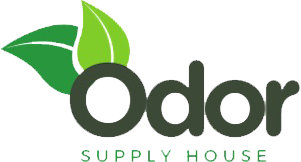
Enzymatic vs. Probiotic Cleaners: What’s the Difference?
Share
If you’ve been exploring eco-friendly or bio-based cleaning products, you’ve likely come across enzymatic and probiotic cleaners. They both sound science-y (and they are), but understanding the difference between the two can help you make better cleaning decisions at home or on the job.
Here’s what sets them apart — and when to use each.
🧪 What Are Enzymatic Cleaners?
Enzymatic cleaners contain natural enzymes — proteins that speed up the breakdown of organic material like food stains, grease, pet accidents, and more. These enzymes act like tiny scissors, chopping up complex messes into simpler bits that are easier to clean or rinse away.
Different enzymes target different kinds of stains:
- Proteases break down proteins (think: blood, food, pet messes)
- Lipases break down fats and oils (grease, salad dressing)
- Amylases break down starches (spaghetti sauce, baby food)
They don’t kill bacteria, and they don’t “scrub” in the traditional sense — they break things down at a molecular level, which makes your job easier.
When to Use Enzymatic Cleaners:
- Fast cleanup of fresh, organic messes
- Laundry pre-treatment
- Pet stains and odors
- Kitchens and food prep areas
🦠 What Are Probiotic Cleaners?
Probiotic cleaners take a totally different approach. Instead of enzymes, they contain live, good bacteria that continue cleaning after you've wiped the surface. These bacteria eat away at grime, biofilm, and odor-causing gunk — and they keep doing it long after you're done scrubbing.
They also produce enzymes naturally as part of their life cycle, so you get a gentle, ongoing clean that supports a healthier surface over time.
When to Use Probiotic Cleaners:
- Areas that need long-term odor control (like bathrooms or garbage bins)
- Deep cleaning grout, drains, or porous surfaces
- Maintenance cleaning in homes, offices, or gyms
- Situations where biofilm or hidden grime is an issue
⚖️ Enzymatic vs. Probiotic Cleaners: A Quick Comparison
| Feature | Enzymatic Cleaners | Probiotic Cleaners |
|---|---|---|
| What they contain | Natural enzymes (not alive) | Live, beneficial bacteria |
| How they clean | Break down organic stains quickly | Eat grime & odors over time |
| Speed | Fast-acting | Slower, but long-lasting |
| Best for | Immediate stain removal | Long-term odor control & deep cleaning |
| Surfaces | Hard & soft surfaces | Porous surfaces, grout, drains |
| After application | Stops working once rinsed/dried | Keeps working for hours or days |
| Odor control | Temporary | Ongoing prevention |
| Shelf life | Stable, but sensitive to heat | Often requires refrigeration or stable conditions |
💡 Can You Use Both?
Yes — and in many cases, it’s a smart combo.
For example, you can:
- Use an enzymatic cleaner first to break down a heavy stain or mess.
- Then, follow up with a probiotic cleaner to help maintain the clean surface and prevent odors from returning.
Just be sure to let the enzymatic cleaner dry or rinse it away before applying probiotics — you don’t want leftover surfactants (soap agents) to interfere with the good bacteria.
🧼 Final Thoughts
Both enzymatic and probiotic cleaners offer safer, more sustainable ways to clean — especially compared to harsh chemical disinfectants.
- If you’re looking for immediate stain-fighting power, go enzymatic.
- If you want a deep, lasting clean that keeps working after you walk away, go probiotic.
- And if you want the best of both worlds — combine them (with a little know-how).
As with any cleaner, always check the label, test on a small area, and follow directions for safe use.
Got questions about which cleaner is best for your home or business? Drop them in the comments or reach out — we love talking shop about smart cleaning solutions. 🧽
#EcoCleaning #EnzymaticCleaner #ProbioticCleaner #GreenCleaning #SustainableCleaning #NonToxicLiving #HealthyHome #CleanNaturally #PetSafeCleaning #OdorControl #BioBasedCleaners #EcoFriendlyHome #CleaningTips #HomeHacks #ProbioticPower #SmartCleaning #DeepClean #SurfaceCare #NaturalCleaningProducts
